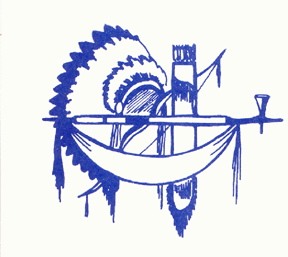“Paiute Wadatika Ma-Ni-Pu-Neen”

Located just north of Burns, the tribal members of the Burns Paiute Reservation are descendants of the ‘Wadatika’[1] band of Paiute Indians who once roamed all of central and southern Oregon.
The Wadatika band earned its name from the wada seeds they collected near Malheur Lake. Their territory included approximately 52,500 square miles between the Cascade Mountain Range in Oregon and the Payette Valley just north of Boise, Idaho.

(Courtesy of Burns Time-Herald)
History
Nine thousand years ago, the Paiutes called the caves found in the northern Great Basin home. Unlike today, where much of Eastern Oregon is now desert, those many years ago a series of very large lakes most likely existed. The Burns Paiute tell their children tales of when horses, camels, mammoths, bison, elk and deer roamed the land in plenty, all providing their people the materials necessary to live. In addition, these ancient Paiute Indians used the fibers of the tule plant, sagebrush bark, willow, and Indian hemp to make fine woven sandals, blankets, coiled and twined baskets, and rope.[3] Archaeologists have found artifacts, such as clothing made from animal hides, which have been identified as being eight thousand years old.[4]
Within two thousand years, the climate changed and the northern Great Basin became drier and warmer. The great lakes that once existed slowly dried up and created an environment which proved deadly for many animals. A mere 7,500 years ago, large mammals such horses, mammoths, and camels became extinct. The large groups of people who lived in the region became smaller and began seasonal migrations in order to take advantage of plants and animals in certain areas.[5] Despite these smaller groups, the Paiutes remained a very social tribe.
During times of harvest and merriment, the Paiutes, along with other Indian tribes, came together to socialize. As the summer gave way to fall, seeds were the main resource to be gathered.[6] Different families would come together to not only celebrate another year, but to gather these precious resources, as well as partake in the communal antelope and rabbit drives. As the winter approached, families would use part of the years gathered resources to build houses near springs in order to wait out the winter.[7] The Paiutes continued this existence for thousands of years.
Conflicting Sides of History
Often stories and legends come into conflict with academic research. Although the Paiute people believe they had resided in the northern Great Basin since before the Cascade Mountains formed, scholars have come to believe that these people have only lived in the region for approximately one thousand years.[8] These scholars acknowledged that humans did live in the basin roughly ten thousand years ago, but the modern Paiutes who now reside have no relation to these ancient people. To this day, both sides stand strongly by their evidence and claim.
Burns Paiute Tribe |
Tribal Council |
General ManagerAnna DeBoard
Phone: (541) 573-2088, Ext. 258
|
Burns Paiute Tribe
|
Notes
[1] Burns Paiute Tribe, “History and Cultural Background of the Burns Paiute Tribe,” last modified on March 2014, http://www.burnspaiute-nsn.gov/.
[2] Robert H. Ruby, John A. Brown, Cary C. Collins, M. Dale Kinkade, and Sean O'Neill, A guide to the Indian tribes of the Pacific Northwest (Norman: University of Oklahoma Press, 2010), 136.
[3] Barry M. Pritzker, A Native American Encyclopedia: History, Culture, and People (Oxford: Oxford University Press, 2000), 226-27.
[4] Dorothy Graber, “An Indian artifact collection in court,” Wicazo Sa Review 14, no.1 (1999): 177-78.
[5] Burns Paiute Tribe.
[6] Pritzker, 227.
[7] Pritzker, 228.
[8] Ruby, 139.


